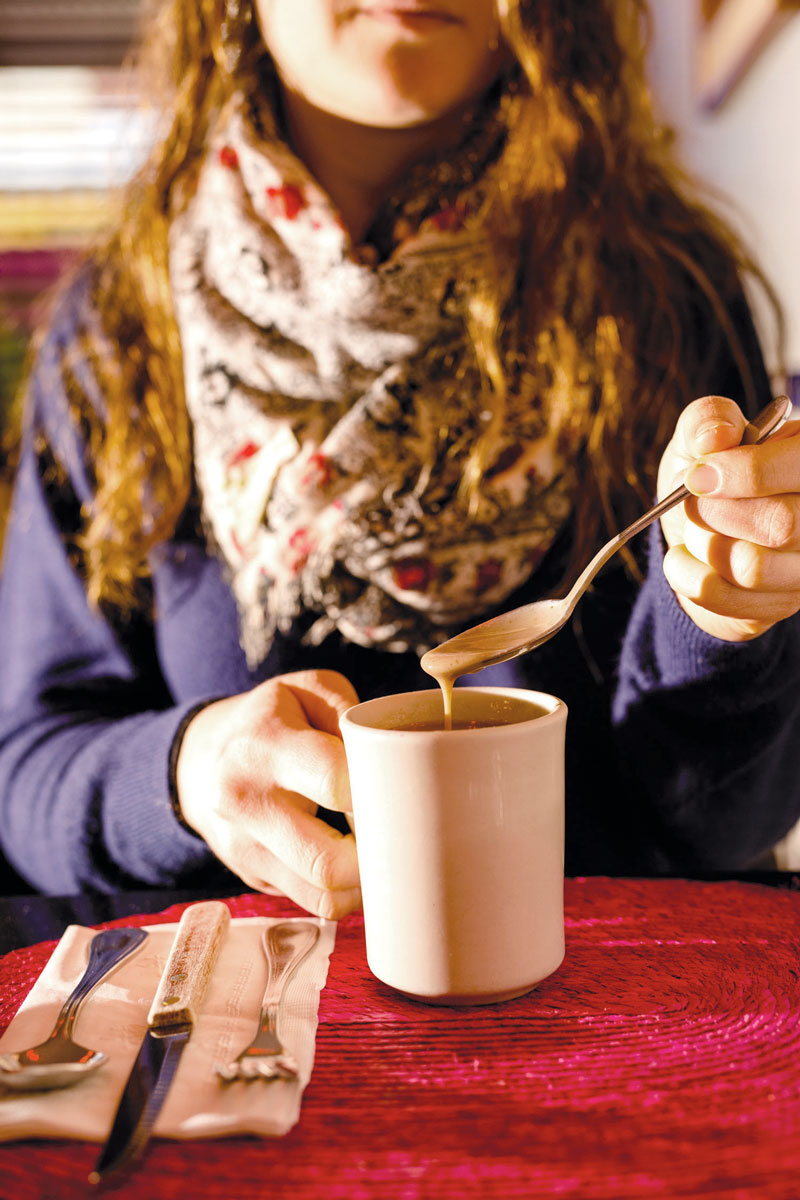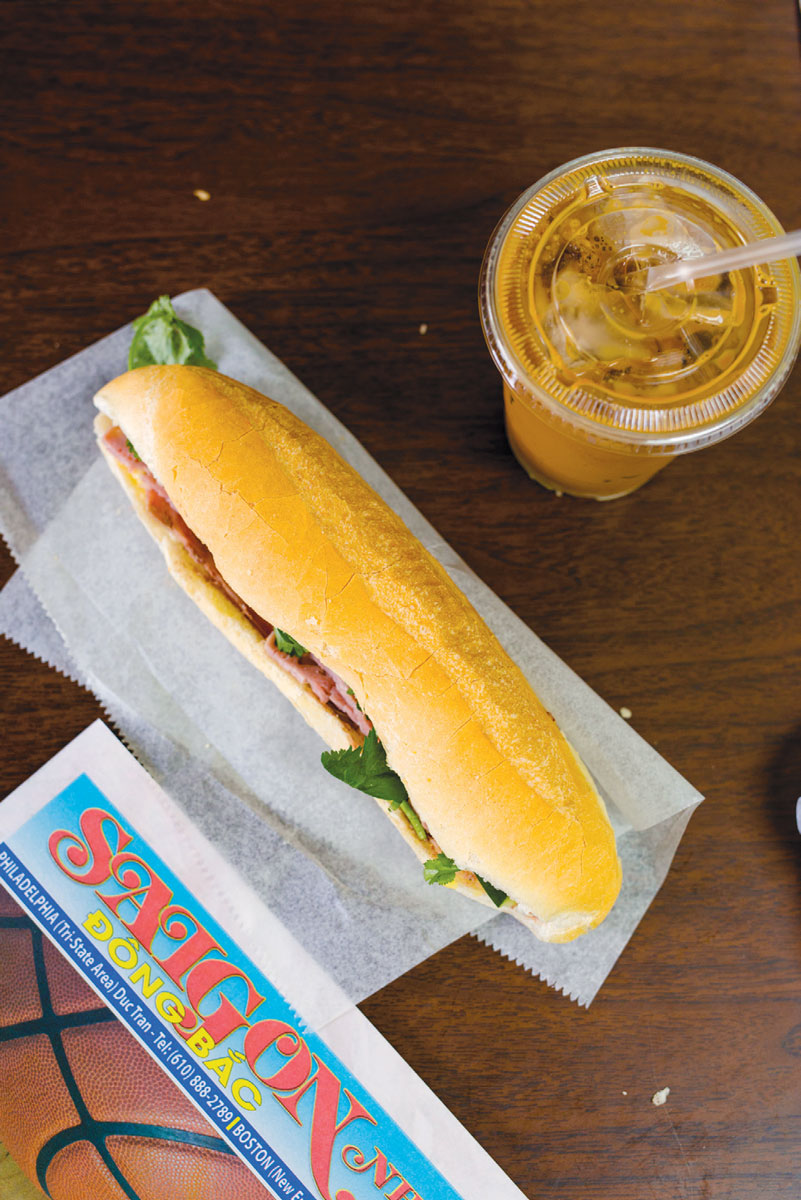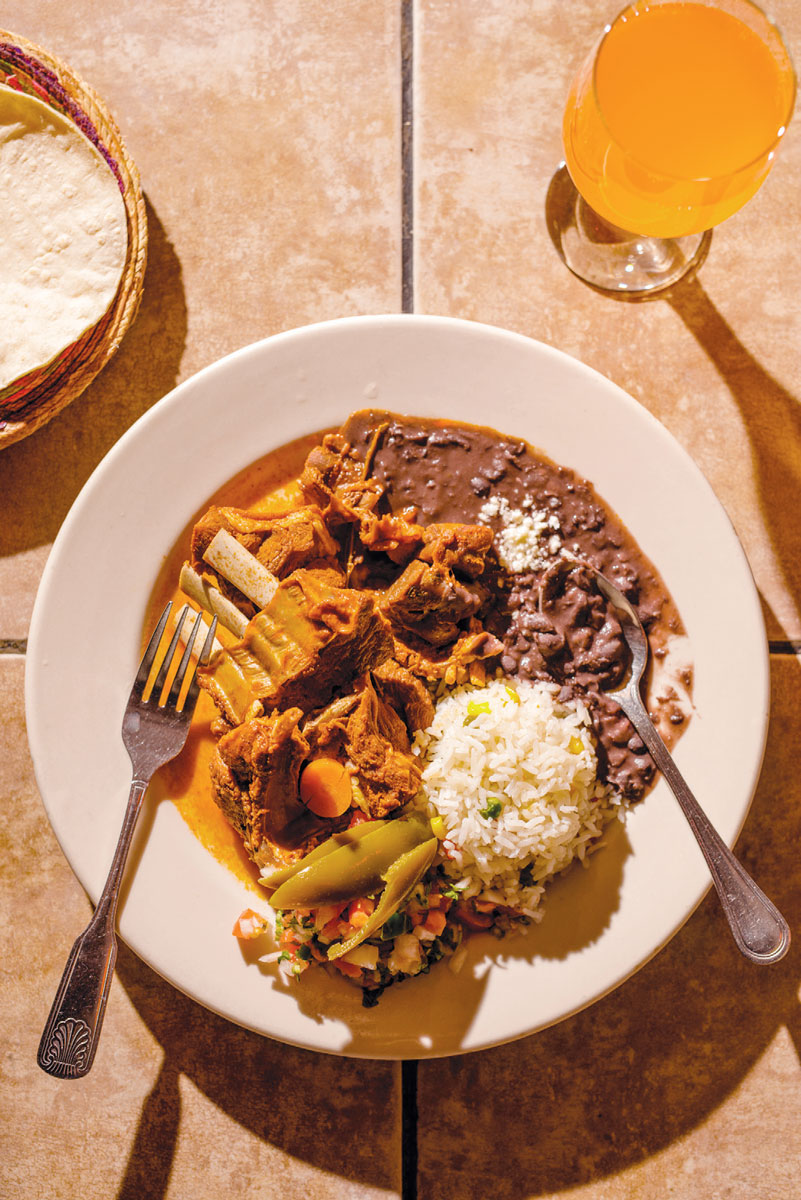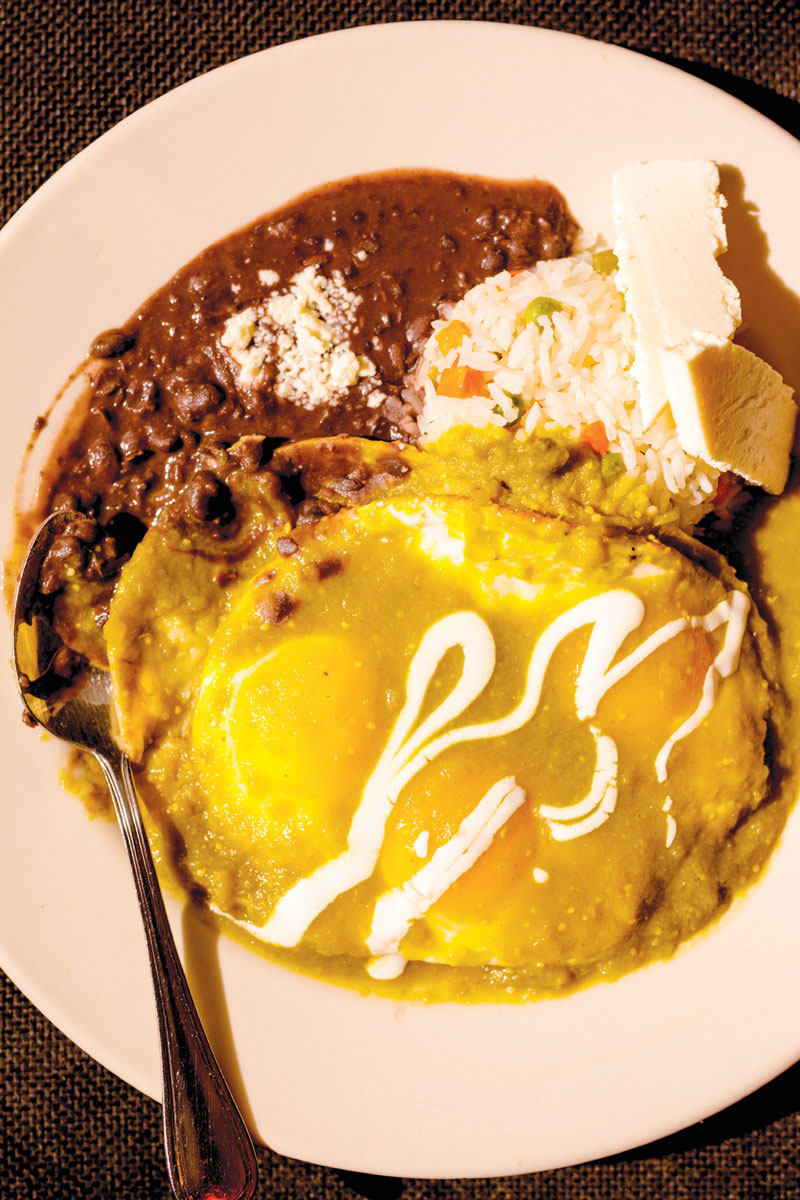Five First Meals
Snapshots of international breakfasts served up in Philadelphia
What makes the international food scene in Philadelphia so captivating? According to the Pew Charitable Trusts, 13 percent of our city’s residents are immigrants, and with them have arrived rich and diverse food cultures from more than 150 countries. Fortunately, many of these newcomers have opened restaurants, from neighborhood stalwarts to hip new spots—and among the many gems, perhaps the most overlooked dishes are served at breakfast. So I undertook a mission to uncover the city’s best international breakfast offerings.
My own food tradition is distinctly Midwestern American, and I haven’t spent time in many of the countries from which these dishes originate. Luckily, I have a few friends who were willing to meet for breakfast, provide a knowledgeable perspective on our meal, and (often) serve as interpreters. Thus, began my journey.
Sam Chen, who teaches Mandarin classes in Manhattan, told me stories of eating “turtle jelly” back home in Sichuan and helped me communicate with Heung Fa Chun Sweet House owner Ren Gincheng. Alex Coronado, a server at Mole Poblano, sat down with me to talk to owner Pedro Rios over his Sunday brunch. Nhung and Thao Nguyen, mother and daughter food enthusiasts (and also my neighbors), taught me about cha lua while translating for me at Cafe Ctrong. Sarah Lily Yassine, an architecture student at Penn, reminisced about the sweet shops in her home city of Beirut over date-filled ma’amoul at Suraya.
There’s a world of breakfasts right here in Philadelphia.

Cafe Cuong
On a recent morning at Cafe Cuong, Dung Kim Nguyen sliced a pile of hoagie rolls lengthwise. Her husband Chinh Lam brought a bowl of fresh cilantro from the kitchen and placed it near a tray of sliced meats arranged on the counter. The couple filled pickup orders and prepared for the many customers who would stop by for a banh mi on their way to work—in Vietnam, the sandwich is often eaten for breakfast.
Lam and Nguyen have been serving banh mi at 8th and Christian Streets for nearly 30 years. They moved to Philadelphia in 1984 and opened the cafe on the first floor of their three-story rowhome. It’s a casual spot, where retirees hang out and watch tennis on the big screen by the front window. The couple keep an impressive plant collection, including an orchid that’s almost as old as their restaurant.
Banh mí means bread in Vietnamese, specifically the baguettes introduced by the French during the colonial period. But colloquially, in the States and in Vietnam, it refers to the sandwich with meat, pickled vegetables and herbs served on a less crusty single-serving baguette.
At Cafe Cuong, the sandwiches are served on Sarcone’s rolls, baked just a block away. The bánh mí thit nguoi is the “regular”: pork-liver pate and mayo spread on the roll and topped with sliced pork, cha lua (pork sausage), pickled carrots and daikon, sliced cucumber, jalapenos and cilantro. Have it for breakfast with café sua dá, iced coffee with sweetened condensed milk, and join the regulars at the small communal table.

Banh mi thit nguoi and cafe sua da at Café Cuong
Heung Fa Chun Sweet House
This bustling shop in Chinatown serves a steady stream of customers who stop in for breakfast on their way to work.
One of the most popular breakfast dishes is the savory douhua (“salty tofu” is the English translation on the menu), a tofu pudding topped with soy sauce, pickled vegetables, baby shrimp, fried garlic, scallions and hot-pepper sauce. Douhua is a popular breakfast and snack across China, though the toppings vary slightly by region. Heung Fa Chun’s savory version is typical of northern Chinese cuisine, where it’s also referred to as douju nao—”brains of tofu.” Mix the toppings into the tofu pudding and you’ll see why.
Heung Fa Chun is also known for their handmade bao (steamed buns). Cooks arrive at five every morning to make the dough for the lightly sweet, pillowy wrappers. They’re stuffed with fillings like pork, vegetables, Chinese sausage and red-bean paste.
“Everything you see here is house-made,” Ren Gincheng says in Mandarin from behind the front counter, which is stacked with containers of sweet soups, jian dui (a sesame-encrusted pastry made with rice flour), and guilinggao (“turtle jelly,” a dessert made with more than a dozen Chinese herbs). His family moved to Chinatown from Fujian Province in southeastern China 10 years ago and took over the Sweet House, which had already been in business for more than 20 years.
On a recent morning, an elderly woman in a red sweater stood in the back, wrapping pyramids of sticky rice in bamboo leaves and tying them with twine to make zongzi. These “Chinese tamales” are traditionally eaten during the Duanwu (Dragon Boat) Festival, but they’re available every day at Heung Fa Chun. Pick up a few on your way out and steam them at home for dinner.
Abyssinia
West Philly’s Abyssinia has long been known for traditional Ethiopian meals served with injera made fresh every morning. You can get that sour, spongy bread, made with teff flour, for breakfast too—the restaurant opens at 9:30 each morning.
On a recent Thursday, a handful of customers sat in the bar adjacent to the dining room. They watched morning news updates while eating dishes like sheya, dried beef cooked with onions and hot peppers served with a small salad, injera and foul—crushed fava beans warmed and garnished with chopped onions, tomatoes, jalapeño, a scoop of thick yogurt, berbere and olive oil.
Abyssinia owner Tedla Abraham eats a bowl of foul for breakfast just about every morning. It’s an Ethiopian staple and a healthy plant-based protein, he says. It’s popular on Wednesdays and Fridays (fasting days for Orthodox Christians) back in the small village near Gondar in northern Ethiopia where Abraham was raised.
He moved to Philadelphia in 1983 and opened the restaurant with his wife, who’s the head chef. She makes traditional Ethiopian breakfast dishes like fitfit, shredded injera mixed with various stews and seasoned with berbere, a spice blend including dried chilies, ginger, nigella and fenugreek. The sils fitfit sounds simple, but the injera, saturated with a spicy, oniony sauce, is seriously flavorful and satisfying. Thick slices of garlic and jalapeño are tucked into the folds of the red-tinged, porous bread. The berbere makes the dish hot—if you need to, ask for it mild or add a side of whole-milk yogurt.
Mole Poblano
The Ríos brothers, Javier and Pedro, opened Mole Poblano on the south end of the Italian Market in 2012. It quickly gained a reputation for the quality of its namesake dish—the rich, spicy and deeply chocolatey mole sauce from Puebla, Mexico, made by the Ríos’s mother, Ynes Sandoval.
Pedro Ríos brought his family in to eat after church one Sunday. His three young boys squished together on one side of the table eating tortas, while Pedro used fresh corn tortillas to pull strands of queso fundido from a warm stone bowl called a molcajete. It was Ríos’s day off; he spends the other six days of the week working in the restaurant, usually with his parents.
“We opened this place for my mom and dad,” he told me in Spanish. Papá Pedro Ríos and Ynes Sandoval moved to Philadelphia from Puebla nearly 20 years ago. They started making tamales by hand in their home kitchen and selling them on the street, quickly becoming known in the South Philly Mexican community. Now they make them at Mole Poblano, on weekends only, and often sell out before noon.
That’s one reason to head to the 9th Street restaurant early on a Saturday or Sunday. There’s also the tender goat barbacoa, served with a bowl of rich consommé fragrant with cilantro and onions. On a weekday you can get huevos con mole, a folded omelet smothered with Sandoval’s specialty and topped with fresh cheese, or stick with Pedro Ríos’s favorite, huevos rancheros.

Goat barbacoa at Mole Poblano
Suraya
On a typical Saturday morning, the expansive new Levantine restaurant on Frankford Avenue is packed. The line stretches from the pastry case, with its pistachio ma’amoul, to the shelf of Lebanese fig preserves, Turkish candies, spices, and pottery along the back wall. Brother and sister Roland Kassis and Nathalie Richan opened the restaurant and market last November.
For breakfast, start with a coffee and ma’amoul, a buttery pastry filled with nuts or dried fruit that’s traditionally served during the Islamic holiday Eid al-Fitr, the feast of breaking the fast. Enjoy the citrusy date filling as you wait for your man’oushe (Lebanese flatbread) with kishik—it’s Richan’s favorite. Kishik is yogurt mixed with bulgur, dehydrated and ground into a fine powder; it’s a traditional way to preserve milk and create a portable, high protein snack, seasoning, or base for soup.
“I remember when I was a kid, there were 20 ladies that would spread the mixture on this beautiful thin white cloth and lay it in the sun,” Richan says, describing the small mountain town near Baalbek where she visited her grandmother, for whom the restaurant is named.
The kishik is mixed with tomato and onion to make a tangy topping for the wood-fired man’oushe. Add an egg and be sure to order a side of toum, a garlicky Levantine sauce. Pair the traditional Lebanese street food with one of chef Nick Kennedy’s Levant-inspired dishes, like thick yogurt topped with tehina, halva, date syrup, almonds and pomegranate.

Man’oushe and tehina yogurt at Suraya
Cafe Cuong
811 South 8th Street
215.574.0527
Heung Fa Chum Sweet House
112 North10th St.
215.238.8968
Abyssinia
229 South 45th Street
215.387.2424
Mole Poblano
114 South 9th Street
215.465.1616
molepoblanosouthphilly.com
Suraya
1530 Frankford Avenue
15.302.1900
surayaphilly.com





